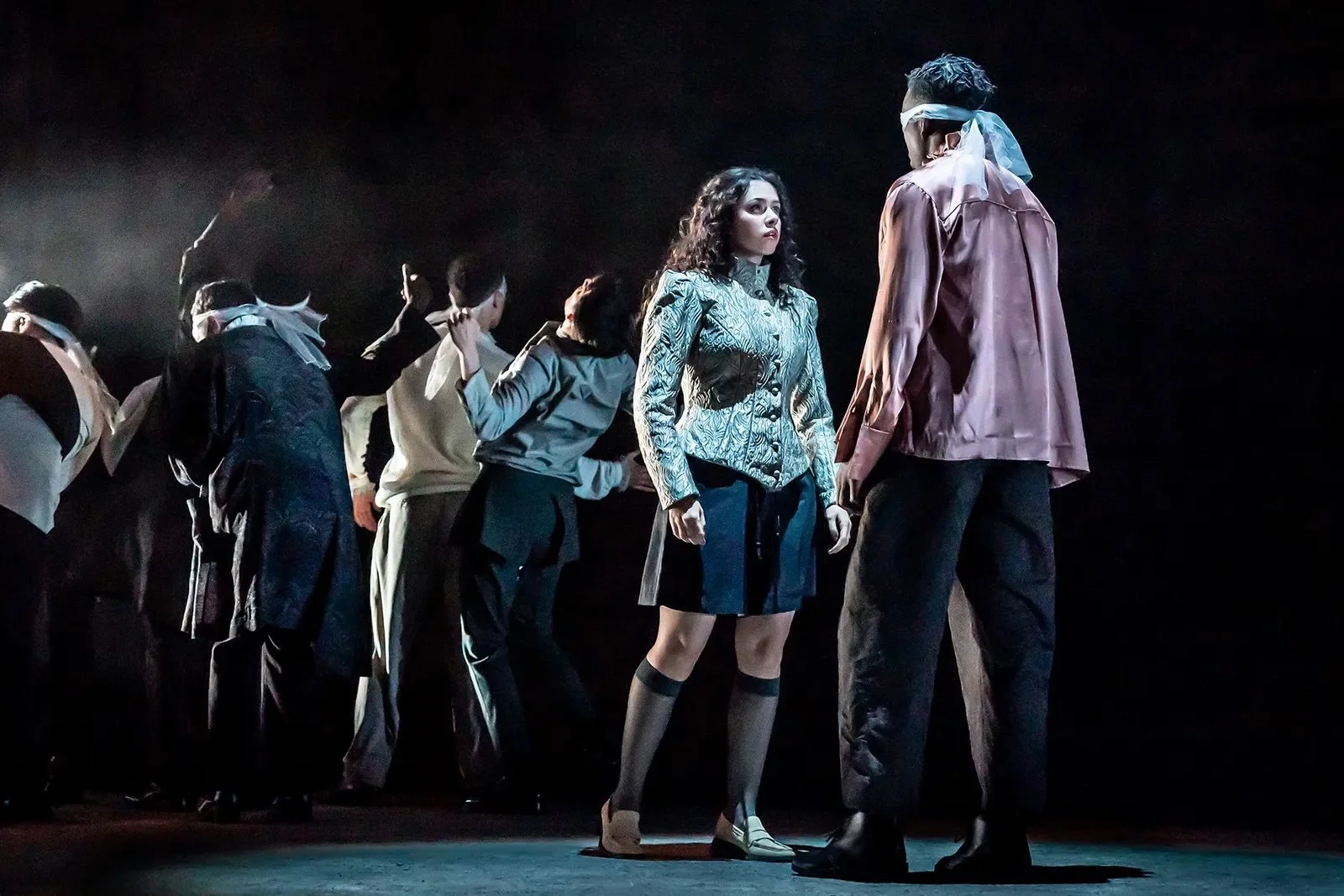THEATRE REVIEW: Romeo and Juliet
18.06.23 Almeida Theatre, London
Rebecca Frecknall’s recent rise to directorial stardom has given her audience a near-fanatical adoration of her work. The multi-Olivier award winning director of Cabaret and A Streetcar Named Desire successfully extended both shows to the West End, and Streetcar’s West End run sold out in a matter of hours. Now, after widespread and widely publicised success (including Paul Mescal crediting her as his “favourite director” to work with), Frecknall has sunk her teeth into yet another modern iteration of a classic, if not the classic: Shakespeare’s Romeo and Juliet.
On Saturday 17th of June on a sweaty summer’s night, I ventured out to the Almeida theatre in Islington to watch the highly anticipated play, endorsed by the packed audience members squeezing into the cosy theatre. Having seen Streetcar on the West End, I was curious to see what directorial decisions Frecknall would depart from and return to in depicting a different story. In Romeo and Juliet, Frecknall firmly establishes her signature style - raw, emotionally driven performances, a sparse and occasionally abstracted use of setting, and modern twists in an attempt to speak to a fresh audience.
“In Romeo and Juliet, Frecknall firmly establishes her signature style - raw, emotionally driven performances, a sparse and occasionally abstracted use of setting, and modern twists in an attempt to speak to a fresh audience”
Frecknall’s characteristic collaboration with and prioritisation of actors is immediately recognisable, for it is the actors that make this an unforgettable performance. Toheeb Jimoh plays a fickle yet doting Romeo, whose hyperbolic lamentations of love are both sweet and tragic in its naïveté. Jimoh truly embodies the lines, transforming 16th century verse into spontaneous exclamations, which invoke laughs in cheeky camaraderie and tears in his turn towards death. Isis Hainsworth’s Juliet reminds the audience that this is a fourteen-year old girl who has been exposed to the intoxicating allure of love for the first time; she is awkward, gawky, outraged at times and shy at others. Her moments of happiness seem to know no bounds, and her misery no end. Mercutio (Jack Riddiford), in contrast, is the epitome of bawdiness, prowling around the stage and spitting out his lines with a hiss. The nurse (Jo McInnes) is the most convincing parental figure, crafting a fiercely protective relationship between her and Juliet that is both unyieldingly strong and incredibly tender.
The costuming (designed by Debbie Duru) is symbolic, not realistic. Juliet embodies a schoolgirl aesthetic in high socks and structured shirts, whilst Romeo is dressed in soft pinks; ironically wearing his heart on his sleeve. Mercutio is dressed in a rebellious 80’s punk-like outfit, and the Prince sports an almost comically serious military style blazer. While the desire to make the costuming more abstract and character-based rather than historically conventional is admirable, it often resulted in a distraction from the performance - and occasionally an eyesore.
Frecknall’s attempts to modernise the play come to mixed results. The play begins with a projection of the chorus’s prologue, accompanied by foreboding cinematic music whilst the actors gather on stage. Scene changes are accompanied by a whooshing sound effect, to which the actors responded by collapsing or reviving like puppets on a string. Both choices provided interest in their innovation, but little more. Snippets of Prokofiev’s dramatic orchestral composition for Romeo and Juliet are interspersed throughout the play, most clearly (and perhaps controversially) for a group dance sequence during the Capulet’s feast. Whilst the feast’s dance sequence felt more frivolous than grounded, Romeo and Juliet’s intimate dance later in the play proves the potential for success in incorporating such a form into the play.
I didn’t expect to enjoy the sparseness of setting on the stage. This tendency of Frecknall was irritating in Streetcar, where rooms played a hugely symbolic meaning in the relationships formed in the play. However, the ability to incorporate traditionally offstage characters into scenes, as well as intensifying the pace of the story by cross-cutting between two scenes created an impressive atmosphere on the stage of Romeo and Juliet. In a play where many of the characters talk about one another, rather than to one another, this directorial choice allowed for the physical actors to represent emotional presences in a scene, to devastating effect. Amongst the incredibly strong acting ability of the cast, the free space created a sizzling dynamism, with actors frequently making full use of the stage spatially and even vertically - the raging fight between Lord Capulet and Juliet had them both on their feet and knees. Further, the transformation of the sober space into the Capulet’s tomb, filled with flickering candlelight, was heart wrenching in its tragic beauty.
While Frecknall’s retelling of the classic is undoubtedly romantic, it finely balances the line between infatuation and true love. What we see are two blessedly innocent teenagers who marry within a day; two kids rushed into adulthood who are thus forced to contend with harsh realities from which they are no longer sheltered. In describing Shakespeare, Frecknall noted that “It’s got nothing to do with intellect … it’s all heart,” and indeed, if some of the flowery language flies over our text-talk heads, the emotion does not: Almeida’s Romeo and Juliet delivers an emotional punch that affirms Frecknall’s interpretation of the play as one of tragedy, not love.
■



